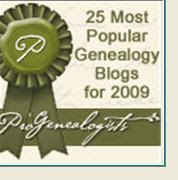The item is an engraved, golden-topped walking stick, presented by the congregation to its founder, that had been languishing in a Philadelphia-area man’s estate.
The tale worthy of PBS’ “History Detectives” began with an e-mail that arrived at the synagogue’s office in April, says Beth Zweig, of Fort Wayne, the congregation’s president and celebration coordinator.
“Hi, my name is Ed Romanofsky. I’m doing a favor for a friend. He has an old cane,” the e-mail began.
Romanofsky, 56, of Havertown, Pa., picks up the story. The friend, Ed Campuzano of Upper Darby, was cleaning out his brother’s house after his death and found the cane. It was inscribed “F. Nirdlinger Esquire from the members of Congregation Achduth Vesholom, Fort Wayne, Ind.”
Campuzano wanted to return the cane to the Nirdlinger family but didn't know how to find them. Romanofsky Googled Frederic Nirdlinger and found a hit on the synagogue's website history. Zweig, who wrote about the congregation's early history, recognized the name immediately.
Nirdlinger, she says, was not just anybody. The German-born merchant was the leader of the 23 founding members of the Society for Visiting the Sick and Burying the Dead, the predecessor to Achduth Vesholom.
Indeed, he had allowed the young, then-Orthodox, Jewish congregation, the oldest in Indiana, to meet in his brick home for services. Men sat in one parlor and the women and children in another, as was traditional then, she says.
Nirdlinger was a businessman whose New York Emporium grew to be one of the largest clothing stores in the state. While there were no descendants in the congregation as Romanofsky and Campuzano had hoped, Zweig knew where to find one.
A few years ago, she says, Roger and Mimi Arnstine of Cleveland had contacted the congregation while visiting Fort Wayne to research their genealogy at the Allen County Public Library. Roger Arnstine is Frederic Nirdlinger’s great-great-grandson.
Zweig contacted the Arnstines, and the stick was reunited with the family by August.
The story behind the story:
Campuzano’s brother found the stick some four decades ago on a train from Philly to New York. He liked it and took it home.
Zweig checked through the congregation's records - translated from German at the library, but found no mention of the stick as a gift. She thinks it might have been an 1865 gift after Nirdlinger had spent 15 years as president of the synagogue.
The Arnstines were planning to attend the anniversary celebration, along with another descendant who recently appeared on the scene.
Kristine Nirdlinger - great-great-great-niece of the founder - lives in the Chicago area and contacted the congregation at Rosh Hashana. She is coming with her fiancé and her parents. She recently learned about her Jewish ancestors as she prepared to marry a Jewish man. She has converted to Judaism and discovered her link to the congregation.
Read the complete story about the second-oldest Reform congregation west of the Rockies at the link above.





































No comments:
Post a Comment